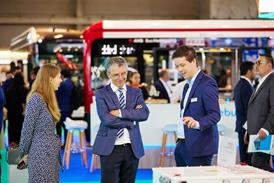
EUROPE: Investment to ‘make rail the core element of the European transport system’ should be an intrinsic part of the EU’s plans for stimulating economic recovery after the Covid-19 pandemic, according to rail sector associations CER and UNIFE.
Writing to European Commission Executive Vice-President Frans Timmermans, Transport Commissioner Adina Vălean and Cohesion Commissioner Elisa Ferreira on April 20, CER Executive Director Libor Lochman and UNIFE Director General Philippe Citroën argue for greater consideration of rail in the upcoming revision of the Multi-Annual Financial Framework for the next EU budget period.
Urging that ‘the post-Covid-19 MFF does not look to return to the status quo, and that the ambitions of the European Green Deal are not forgotten’, they emphasise that ‘policy actions need to ensure that low-emission passenger, freight and urban transport options are supported over less environmentally-friendly modes’.
In particular, the Connecting Europe Facility, Structural Funds and the Horizon Europe research programme, ‘need to be front and centre in ensuring the right approach to transport in the coming years’. Expanding the CEF 2 budget would provide ‘resources to achieve rapid transition towards green and sustainable mobility’, they suggest.
The associations point out that ‘as Europe has suffered under the impact of the Covid-19 pandemic, railways have stepped up to provide essential services to the population, while at the same time bearing the considerable financial impact of the collapse in regular passenger and freight numbers’.
EU investment in rail infrastructure would reassure passengers, as well as encouraging further public and private financing, they suggest, adding that ‘investment in Europe’s rail infrastructure benefits European society as a whole’.
Noting that ‘rail freight companies have proved their strength in offering efficient cross-border cargo connections for large volumes of goods using minimal human resources’ during the crisis, the associations emphasise that ‘investing in the right resources and technologies to maximise infrastructure capacity will help rail freight achieve its true potential’.
From the supply chain perspective, ‘European rail manufacturers have continued to work at their best to provide the technology and innovation necessary to get through the socio-economic storm provoked by Covid-19. Safeguarding the global competitiveness of the European rail supply industry will ensure that the digital and innovation uptake of rail transport continues to advance’.
Highlighting the potential environmental benefits of shifting more freight to rail, as well as ‘co-ordinated investment in direct city-to-city rail connections’, which could attract passengers away from ‘other highly-polluting modes’, the associations believe that ‘the EU should not be looking to return to the status quo, with all its accompanying environmental impacts.
‘The changes to Europe coming from the Covid-19 crisis will be long-lasting, but we believe that by looking at the economic opportunities and environmental benefits offered by a renewal and improvement of the European rail network, EU leaders can use this as a cost-efficient opportunity to meet several goals at once. The new MFF should have the Green Deal at its core.’

















